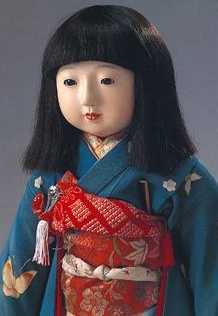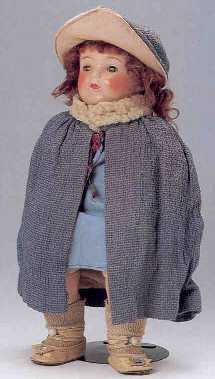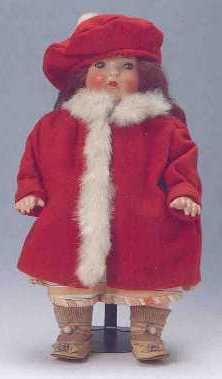|
|

|
|
|
Miss Kagawa
|

|
|
|
The 58 Japanese dolls sent to America
in 1927 were named after each Japanese prefecture and colony. These dolls are
also known as Ambassador Dolls or Torei Ningyo ("Dolls of Gratitude in
Japanese). The exhibit at the Japanese American National
Museum included Miss Dai-Nippon (also known as Miss Japan or Miss Hideko
Yamato), Miss Toyama, Miss Kagawa, Miss Tottori, and Miss Osaka-fu. Miss
Tottori's brother, Mr. Tottori, was also at the exhibition. Several of the Japanese
dolls' accessories, including lacquer chests and parasols, were also on
display.
This display celebrated the 75th anniversary of
the U.S.-Japan Doll Exchange. This special exhibition traced the historical and
political context of the 1927 exchange, related what happened to the dolls since
1927, and tried to revive the original mission to teach children how to respect
and value diverse cultures and experiences. The Museum staff prepared many
special activities for children as they walked through the exhibition rooms. The
walls displayed many historical photos from the 1927 exchange and photos of
activities involving American Friendship Dolls at Japanese schools.
After the exhibition, the Japanese American
National Museum sent new Friendship Dolls to the children at the seven Japanese
schools that lent the Museum their Friendship Dolls. These new American
Friendship Dolls reflected the
diversity of the U.S. not only in ethnicity, but also in vocation. For example,
the Museum sent an African American veterinarian, an Asian American girl, and a
European American soccer player. Along with the dolls, many letters written by
children who attended the special exhibit were also sent to the Japanese
elementary schools and kindergartens.
|


